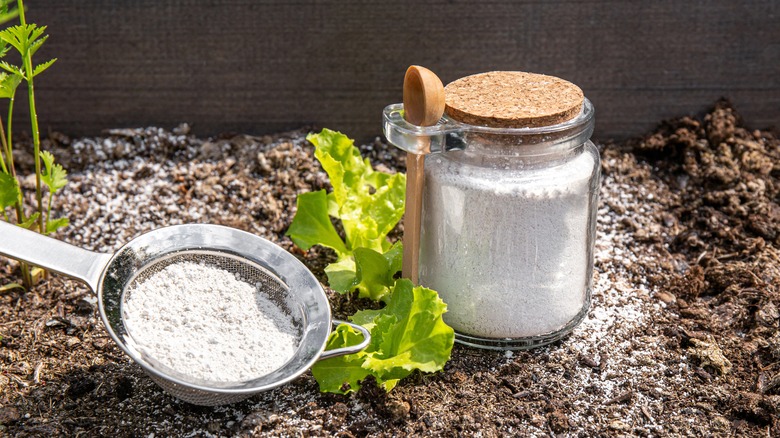Although many pests can wreak havoc on a lawn, the moles can be particularly damaging if left unchecked. This rodent-like insectivore is quite the digger and creates holes that go at least 10 inches underground. If you have them in your area, they’ll fill your yard and garden with holes if given the opportunity.
Unlike voles, moles don’t actually eat plants but eat insects instead. Despite this, the holes they make in your yard and garden can be disruptive. These holes can make it easy for rodents and other animals to access your garden and eat your plants themselves. Moles can be beneficial for a garden in some ways. They help aerate the soil and get rid of insects but they can cause a lot of damage too. Many homeowners don’t like the cosmetic damage that they cause, so you may still want to take steps to get rid of them.
Some homeowners use lethal methods to deal with moles, but you can simply repel them instead. One of the best ways is to use diatomaceous earth (DE), a powder made from the remains of diatoms, or fossilized algae. There are many uses for diatomaceous earth around your home and garden, and although this powder kills some insects and pests, it doesn’t actually kill rodents such as moles. However, it can repel them effectively and eliminate a mole problem.
How to use diatomaceous earth to repel moles

To deter moles with diatomaceous earth, add some of the powder wherever you suspect moles are spending their time. Sprinkle it around entrances to their tunnels and around areas of your yard and garden you want to keep them away from. Make sure to use food-grade DE since filter-grade DE is toxic. Filter-grade DE is meant for pools and is unsafe to use around the home and yard. Also, be sure to wear long pants, long sleeves, gloves, and eye protection when spreading it.
Using diatomaceous earth can work well for scaring moles away and might be all that’s needed to start making your yard mole-free. Keep in mind that the main reason diatomaceous works for moles is because they help to kill the insects that they feast on. It can dehydrate and eventually kill insects that you don’t want in your garden.
Even more effective for getting rid of moles is to use diatomaceous earth in combination with essential oils. Adding a few drops of peppermint oil or lemon oil to diatomaceous earth and placing the combination in a small container can work well for repelling these pests as well as rodents and rabbits. Moles don’t like the smell of these essential oils. Diatomaceous earth helps their smell persist for a longer period of time when compared to using them alone or adding them to cotton balls.
Avoiding problems with diatomaceous earth
Remember that there are drawbacks to using diatomaceous earth to repel moles and rodents. Although it will kill damaging insects that come around your yard and garden, it’s also capable of killing pollinators. If you want to bring more pollinators to your yard and garden, you’ll want to be careful when using it. To avoid hurting bees and other pollinators, avoid using it on or around blossoms and apply it when there are very few of these insects around. Sprinkling diatomaceous earth at night works best since pollinators are most active in the mornings and afternoons.
Despite taking these precautions, there’s still a chance that you’ll harm the bee and pollinator population around your yard and garden, so keep this in mind. You should weigh out the pros and cons of using DE around your home. You may decide that ridding your yard of moles is worth it despite the risks. Consider your pest problem carefully and use DE strategically if you want to do more good than harm.